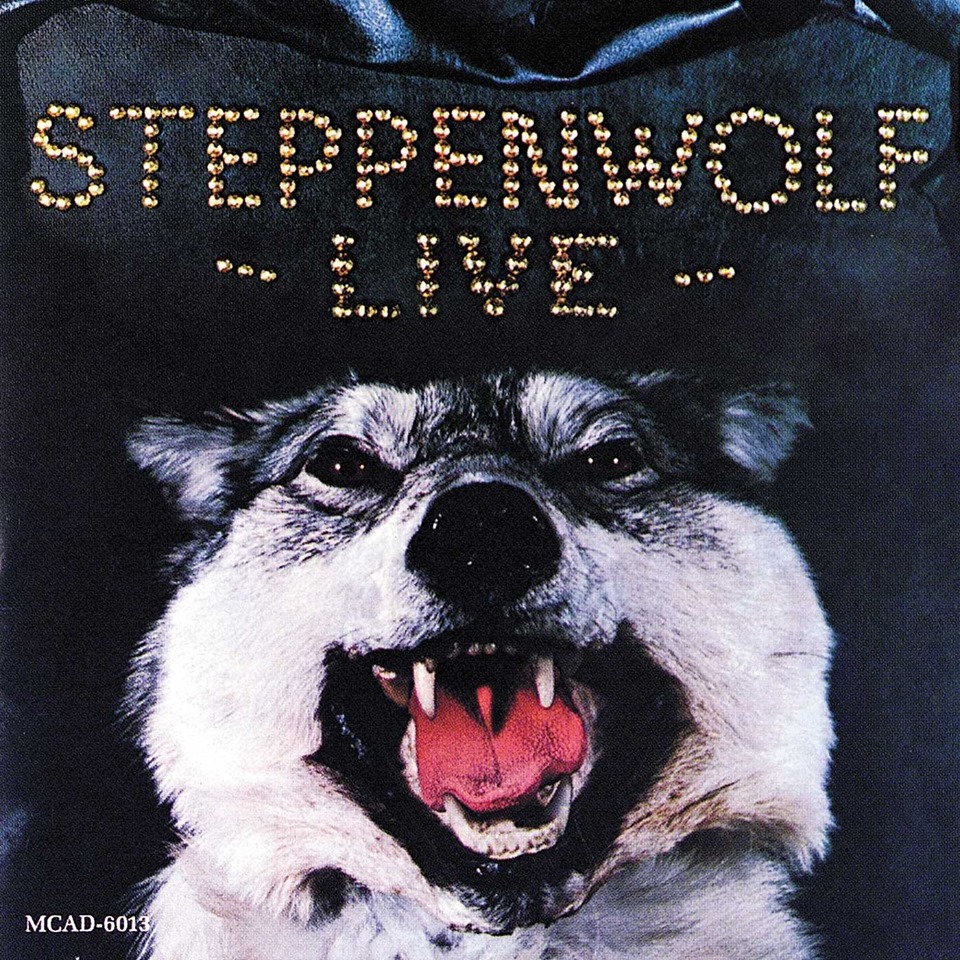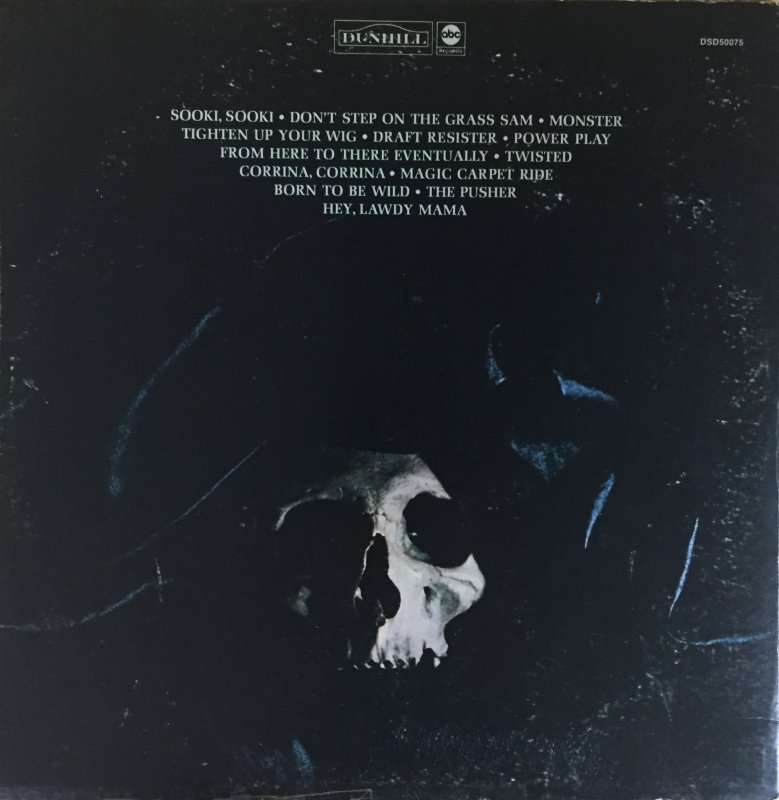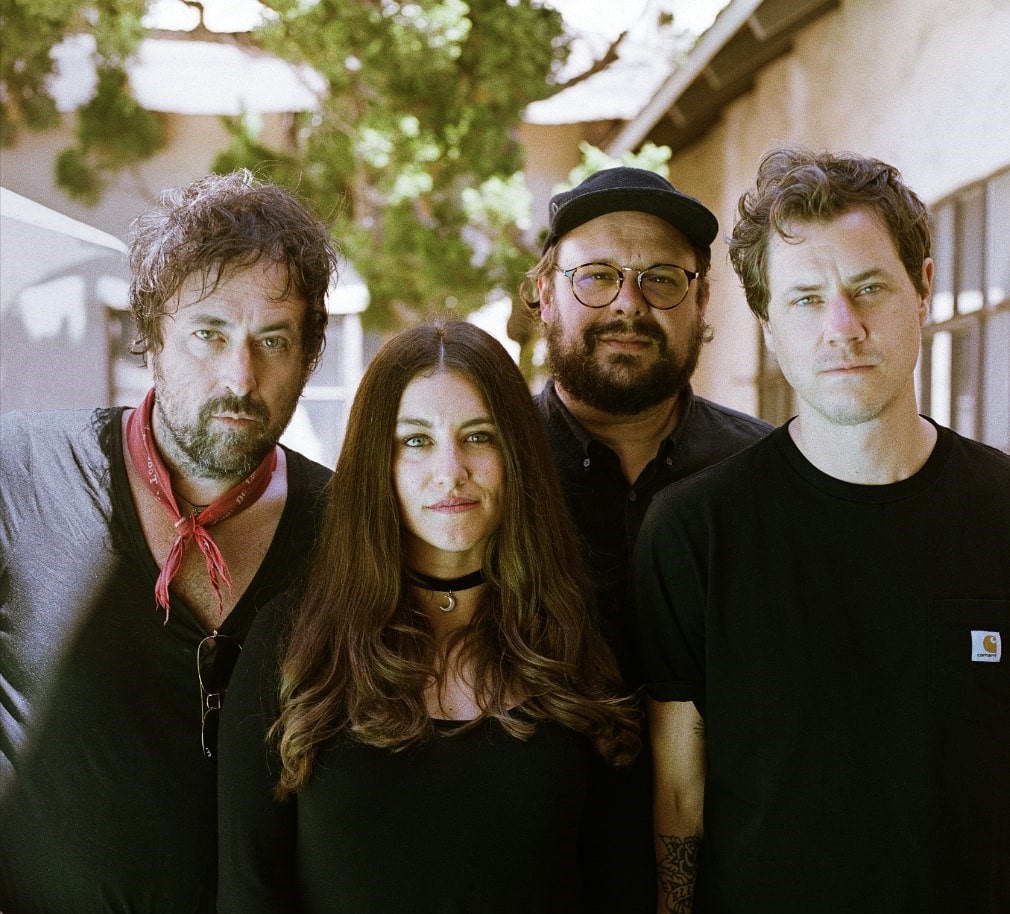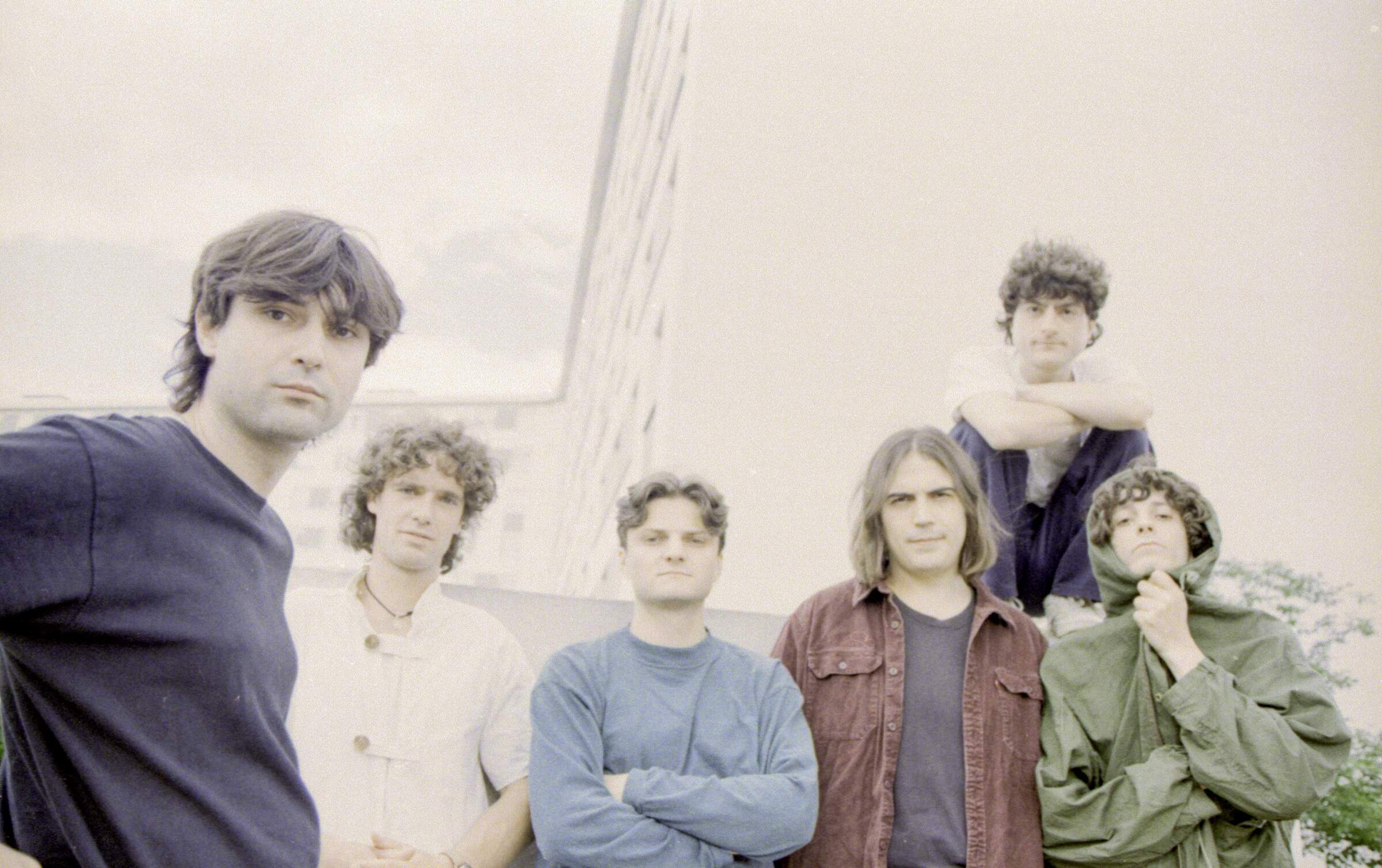The Steppenwolf Story – Chapter Six
Released in April 1970, five months after its predecessor LP “Monster,” Steppenwolf’s classic two LP set “Steppenwolf Live” was recorded, mainly at one gig at The Santa Monica Civic Center in Santa Monica, CA, during the band’s tour supporting “Monster” and was one of the soon to become en vogue double album live releases of the 1970s.
In reality, only ten of the thirteen tracks were actually recorded live, three others being EQ’d and having “delay effects” as well as audience sounds at the beginning and end of each, in an effort to match the sonic qualities of the actual live recordings. The three studio takes were added by ABC/Dunhill against the band’s wishes to give the set enough tracks to qualify as a double album. “Steppenwolf Live” was a big seller, returning the band, for the fourth and final time, to the Top 10 of the Billboard Hot 200 Albums charts, peaking at #7, and yielding a Top 40 single in “Hey Lawdy Mama” which reached #35 when released in the same month as the LP. The single version of “Hey Lawdy Mama” is a differently edited version ending with a fade-out rather than a segue into “Magic Carpet Ride” as it appears here, and runs a full twenty seconds longer, with a run time of three minutes, nineteen seconds. On original pressings of “Steppenwolf Live” the two songs are banded together with a run time of seven minutes, thirteen seconds.
“Steppenwolf Live” was recorded by the same quintet as “Monster” consisting of vocalist/rhythm guitarist John Kay, lead guitarist Larry Byrom, keyboard/vocalist Goldy McJohn, bass guitarist/vocalist and Nick St. Nicholas and drummer Jerry Edmonton. The thirteen tracks were an excellent representation of the band in 1970, with four tracks from “Monster,” three from the band’s 1968 debut “Steppenwolf,” three from the band’s sophomore effort “Steppenwolf The Second” released the same year, and three studio recordings, one, the hit “Hey Lawdy Mama” being a new song, “Twisted” and “Corina, Corina” both being holdovers from the band’s days as Sparrow, with both originally recorded in 1967, the former first appearing on the 1969 Columbia Records album “John Kay & The Sparrow” while the latter debuted on Steppenwolf’s fourth album “Early Steppenwolf’ recorded live at The Matrix in San Francisco on May 14, 1967. Oddly, the group’s third album “At Your Birthday Party” was not represented at all, the LP, as previously discussed in Chapter Three of The Steppenwolf Story, being rather like an outlier in the group’s catalog and none of its tunes ever playing a major role in their live repertoire.

From the beginning it is clear that this is a tight band ready to rock. They had a deep catalog of songs to draw upon. With four studio albums behind them, all top 20 hits, three reaching the top 10 and a top 30 live album, as well as three top 10, and a total of five top 40 charting singles already behind them, Steppenwolf were seasoned and on top of their game. The set the band played for the audience in Santa Monica was typical for a Steppenwolf concert in 1970, including two of their top 10 hits, the best known album tracks from their first two albums, a couple of staples from their days as Sparrow, the most popular tracks from the “Monster” album which they were touring, and their best known social commentary material, amounting to nearly an hour of classic live Steppenwolf combining psychedelic rock numbers from their early period with more edgy hard rock tunes indicative of the sound they had evolved toward afterward, no doubt a treat for those in attendance.

After being introduced, the band launched in to their cover of the Don Covay/Steve Cropper R&B classic “Sookie Sookie” featuring Larry Byrom’s lead guitar snaking about and Goldy McJohn’s Hammond organ swirling through his Leslie cabinets. The song was highlighted by Byrom’s relentless lead line and his smoking hot solo. Kay’s vocals boomed over the top of the band with Edmonton and St. Nicholas tightly holding down the bottom end. Kay introduced the band’s anti-establishment marijuana ode “Don’t Step On The Grass Sam” by making reference to then President Richard Nixon’s Operation Intercept, his costly, ineffective attempt to halt the smuggling of weed across the Mexican border, where, he quipped “they hung up half a million tourists for about a week or so and end then they scored three joints, big deal, this next one always was and still is dedicated to Uncle Sam” typical of the taunts and political barbs tossed at the President by the rhythm guitarist/vocalist. Byrom’s guitar and McJohn’s organ supply the song’s heavy riff, with Byrom delivering another of a seemingly endless number of killer solos, before Kay sounds the warning regarding law enforcement and government, “all will pay who disagree with me, please give up you’ve already lost the fight alright.” But Kay counters this with his retort to Nixon and law enforcement’s policy “just as soon as you are gone, hope will start to climb, please don’t stay around too long, you’re wasting precious time.” Considering the recent suggestion by the Trump administration to strengthen the enforcement of marijuana laws and have federal regulations override those of states who have legalized medicinal and/or recreational usage of pot, these words ring true a full half century later. “Tighten Up Your Wig” is a song dating back to Sparrow, and addresses the balance of liberal and conservative ideologies and has a blues rock feel with Byrom’s guitar, McJohn’s organ and Kay’s harmonica to the fore of the mix, with Byrom’s soaring solo definitely the song’s highlight musically. A ten minute version of “Monster” is perhaps the highlight of “”Steppenwolf Live” with the heavy, repeated riff by McJohn and Byrom suited perfectly for the three section tune, in which Kay addresses the nation building of America as a creation of people seeking to escape “king and pope” which segues into a section recounting the move Westward and the building of a rail system from shore to shore, the resulting modernization coming at a heavy price in the loss of life among Native Americans and Asian immigrants in particular, before the nation fought and survived a Civil War and two World Wars. The final section of the medley examines the fabric of the nation’s social and political arenas during the trying times of the war in Vietnam, with Kay’s repeated chorus of, “America where are you now, don’t you care about your sons and daughters, don’t you know we need you now, we can’t fight alone against the monster” the latter term referring to the military industrial complex under the Nixon administration and its intrusion into the lives of all Americans. “Draft Resister” another tune from the then current “Monster” LP, tells of an AWOL soldier seeking asylum in Sweden, who had joined the military to seek adventure and become a man, only to rebel against perceived brainwashing at the hands of The Pentagon and Washington’s toys, the latter an obvious reference to the tools of war. Kay also discusses the plight of young men faced with a difficult decision as to whether or not to go to war, and bemoans the bravery of those who faced prison and dishonor if they were unable to attain conscientious objector status, a fate faced by even those as famous as heavyweight boxing champion, Muhammad Ali, who could have been sentenced to a lengthy prison term for deciding not to participate in the war. In Kay’s eyes this was a sign of bravery not weakness, a point debated even until today. Again, Byrom’s guitar is essential to the song’s sound as is the driving beat of Jerry Edmonton’s drums. Another tune from “Monster”, “Power Play” features a gentle guitar intro, as the song discusses the wielding of power by the government, and the resistance offered by many Americans. The tune’s lyrics include the cautionary, “those who give can take away, don’t feed the hand that feeds you” a somewhat ambiguous discussion of where the balance of power should lie. Once again, Byrom and McJohn carry the tune, with the former offering up yet another powerful solo. A mid–tempo rocker “Corina, Corina” is the first of three studio recordings intermingled with the true “live’ tracks and is a relaxing change of pace as the band settles into a gentle groove emanating a most peaceful aura. “Twisted” is the second studio track included and is dominated by Byrom’s slide guitar and Kay’s harmonica, with Kay also implementing “The Bag” an early type of talk box designed by Kustom. An edited version of this song was the b-side of “Hey Lawdy Mama.” The blues rock number “From Here To There Eventually” offers up a relaxed feel with gorgeous vocal harmonies and a most pleasant melody. Mid-tune the band turns up the heat, with Byrom’s stinging lead line and feedback drenched solo driving the tune to its close. “Hey Lawdy Mama” is the third studio track included, and is an accessible, somewhat commercial tune that still maintains a hard rock edge. Kay again employs The Bag and Byrom’s guitar drives the song. On original pressings, “Hey Lawdy Mama” segues into “Magic Carpet Ride” the two tracks banded together with a run time of seven minutes, thirteen seconds. Later pressings separated the two tunes, with “Hey Lawdy Mama” running almost exactly three minutes. A differently edited version of the song, featuring a fade out, and running three minutes, nineteen seconds, reached #35 on the Billboard charts when released in April 1970. With “Magic Carpet Ride” Steppenwolf returns to their psychedelic rock phase, Kay’s trippy lyrics blend perfectly with McJohn’s organ and Byrom’s guitar, the latter supplying some incredible feedback driven work. A six minute run through of Hoyt Axton’s anti-heroin classic “The Pusher” which was previously included on both “Early Steppenwollf” and the band’s 1968 debut LP, includes a relentless riff from Byrom who pulls off another roaring solo and Kay’s familiar chant, “God damn, the pusher” as the song compares marijuana dealers who sell you “lots of sweet dreams” and the pusher who will “ruin your body” making a clear distinnction between soft and hard drugs. The album closes with the band’s signature song “Born To Be Wild” pennedy by Sparrow guitarist, Mars Bonfire (Dennis Edmonton), the band’s biggest hit, topping at #2 on the charts, as well as being included on their s/t 1968 album. The song is familiar from its feedback laden guitar intro, before Kay launches into the famous “get your motor runnin’, head out on the highway” lyrics, which also include “I like smoke and lightning, heavy metal thunder” which came to identify a genre of rock music that is popular until this very day. The band is at full throttle throughout this ultimate biker anthem, which like “The Pusher” was immortalized by its inclusion in the 1969 classic motorcycle flick “Easy Rider.” The band’s sound builds to a crescendo filled with Byrom’s feedback, the perfect concert and album closer.
“Steppenwolf Live” still stands as one of the best examples of a performance by a band at their absolute peak, and would be a difficult one for any band to follow up on. However, a mere seven months later, Steppenwolf would indeed release their seven album, fifth from the studio, appropriately enough titled “7.” While the follow up would not reach the heights of “Live” it was a fine album in its own right, and would reach the Top 20 on the charts and achieve Gold Record status. But that album will be the topic of Chapter Seven of The Steppenwolf Story, which will appear shortly.
Steppenwolf “Steppenwolf Live” (1970)
– Kevin Rathert
All photo materials are copyrighted by their respective copyright owners, and are subject to use for INFORMATIONAL PURPOSES ONLY!




Compelling enough to make one want to listen.
Wow, The Triumph of the Thrill, that is an incredible compliment. Thank you so much for the kind words. I hope you enjoyed the entire series of Steppenwolf articles. I sure enjoyed writing them.